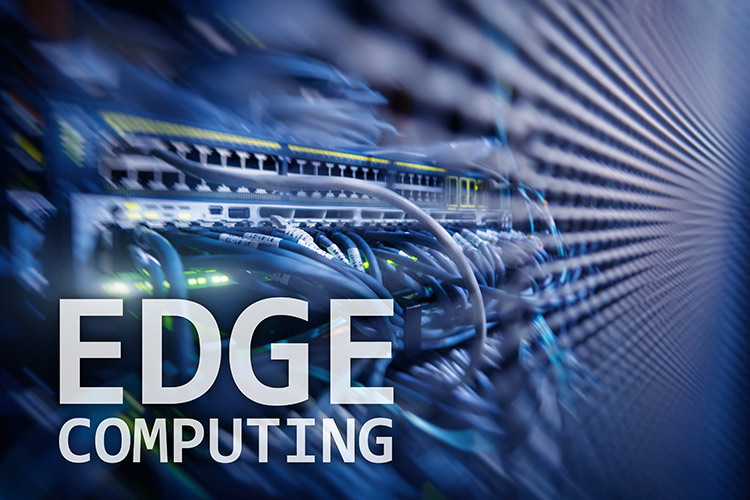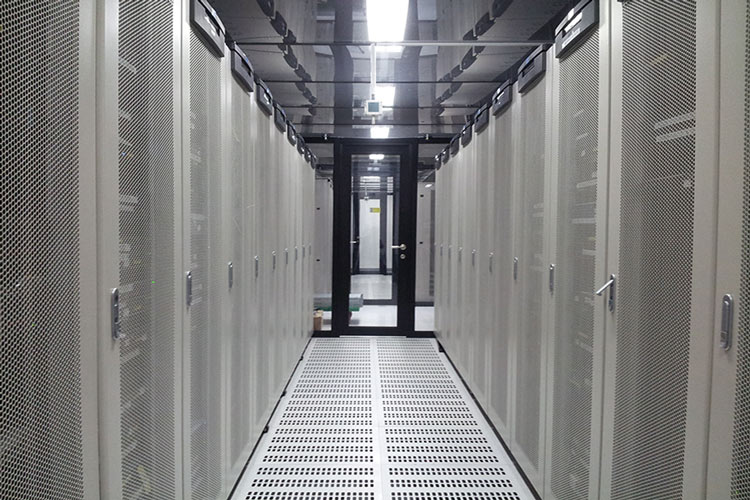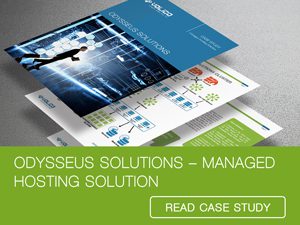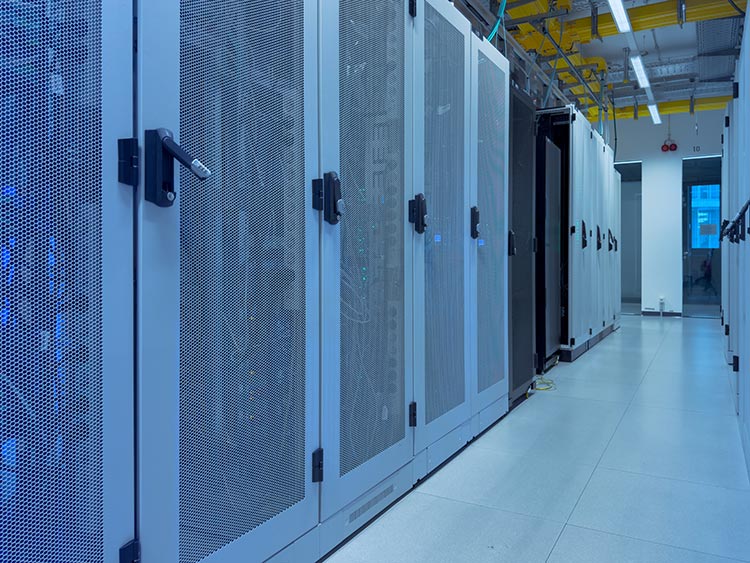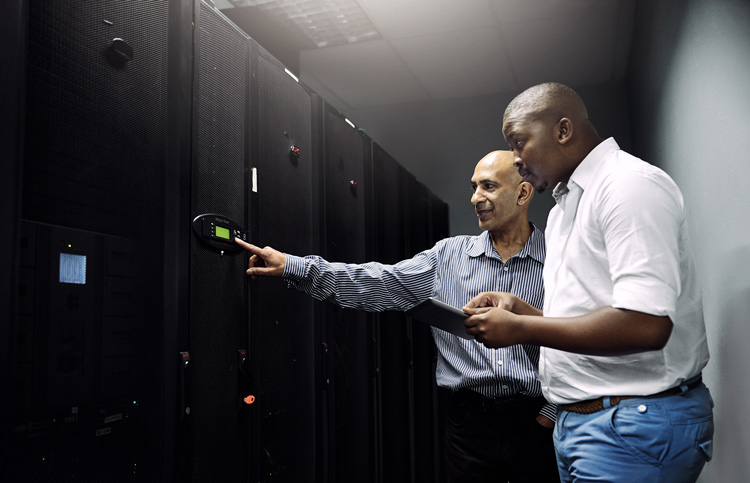With today’s technologies becoming increasingly dynamic, the availability of data is beyond doubt one of the most important building blocks of performance. Instant availability is key for time-sensitive applications that are becoming widespread and intensively used. To make processing quicker and easier, computing isn’t centralized only in the cloud anymore. The edge data centers takes less compute-intensive processing tasks and carries them out closer to the data source without transferring large data volumes over long distances to the cloud and back. These small-footprint facilities contribute significantly to speeding up data processing and delivering the necessary reactions with low latency.
In today’s data-driven world, speed is everything. This article will dive into the basics of edge computing. We’ll take a look at what an edge data center is and its crucial role in our fast-paced technological landscape. Let’s dive in.
What is Edge Computing?
Edge computing is a data processing model that, instead of relying on centralized data centers, physically brings data storage and processing closer to the end user, on the “edge” of the network. This decentralization allows faster data processing by placing computation closer to the source where the data is being generated.
Edge data centers are vital for high-bandwidth and low-latency applications that have to analyze and act upon data instantly, in real-time. Edge computing facilitates IoT devices, autonomous vehicles, and AR applications by processing data closer to the source instead of relying on one data center located at a bigger distance.
While not all applications are edge-compatible, leveraging the edge is a growing trend. Today, edge computing and 5G have become crucial for supporting emerging technologies with countless applications that are becoming increasingly intertwined with our everyday lives.
How Does Edge Computing Work?
Data has countless shapes and forms today, generated by different sensors and devices for countless purposes. Say, it’s generated right now by the sensors of the smartwatch on your wrist. From the physical device, data has to travel to the cloud for processing. It takes time for the data to travel from the sensor to the cloud and back, and this latency can cause issues. For time-sensitive applications like healthcare devices or self-driving cars, low latency can be life saving.
Edge data centers can solve latency issues thanks to their proximity to the data source. Instead of traveling all the way to the cloud and back, the data can now be processed almost instantly at a closer location. The edge server collects data from the sensors, sorts and stores it. Additionally, it processes data for mission-critical applications where low latency is a must. In those cases, data doesn’t travel back to the cloud; instead, the processing happens at the edge, relieving the cloud from the risk of over-encumbrance.
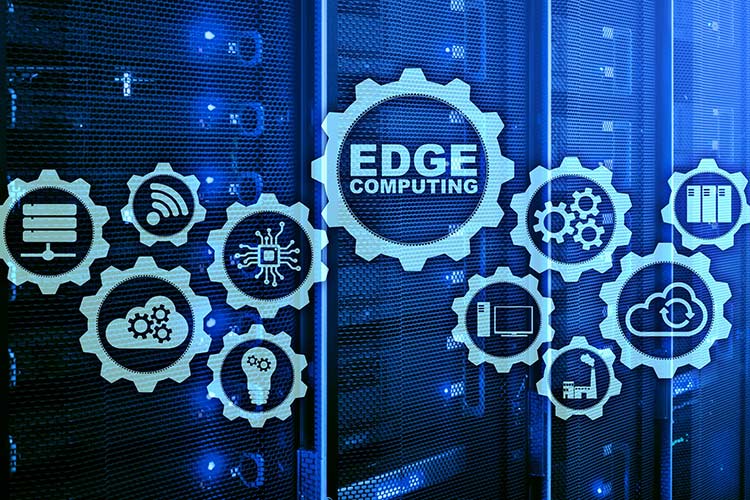
Edge Data Centers Explained
By definition, edge data centers are smaller footprint data center facilities positioned close to the end user or where the data is generated, at the edge of the network. These facilities provide the basis for edge computing, the crucial infrastructure for storing and processing data more efficiently and closer to the source. The multitude of smaller, strategically positioned edge data centers usually connect to one or several larger data centers.
Fundamental Aspects
An edge data center can serve different purposes depending on the exact roles and functions of the applications it is handling. Although definitions can be different depending on the roles fulfilled in various industries, there are a few fundamental characteristics all edge data centers share in common.
Firstly, they are located in the proximity of the areas they serve, and they are typically managed remotely.
Secondly, the edge data center has a small footprint but is part of an extensive network that connects to one large data center.
Thirdly, edge data centers process mission-critical data for time-sensitive applications and services that need processing at the edge.
The Role of Edge Data Centers
Big data has been transforming the world recently, which brings latency issues into the spotlight. AR, machine learning, IoT, live streaming, and similar deployments no longer allow delays. Users demand instant access to devices and services, and edge data centers serve an important role in facilitating the constant and efficient flow of information. They significantly contribute to:
- Curbing Latency. For industries like financial services, healthcare, or emergency, every fraction of a second counts. The smallest delays can have severe consequences in these fields. However, edge data centers make it possible to curb latency issues and achieve the necessary speed and efficiency for applications to be on time.
- Decentralizing Data Processing. With their strategic location close to users, edge data center networks allow processing much closer to the source, reducing latency and bandwidth issues.
- Easy Processing for Smart Devices. IoT devices and several applications, including AR, rely on fast processing of real-time data. Edge data centers have a crucial role in facilitating the smooth functioning of smart devices, homes, and cities.
How Are Edge Data Centers Managed?
Because it happens remotely, edge data center management happens with the help of remote management tools, databases, and analytics. Managing all the connections across extensive networks, monitoring the efficiency of the facilities, and making changes can present specific challenges for technicians. Because of remote management, special attention must be paid to work instructions, decision-making, and maintaining accuracy.
DCIM, or Data Center Infrastructure Management software assists edge data center managers by providing a system for monitoring all the assets spread out across many locations. This includes power, cooling, physical security, and connectivity for all the edge data center facilities. By making it possible to identify issues quickly, DCIM contributes significantly to maintaining availability and reducing latency.
Demand for Edge Data Centers is Growing
Digital transformation has increased the need for fast data processing, assigning an important role to edge computing.
With data-intensive applications becoming more and more widespread, there’s a constant need to improve performance for faster data processing. Self-driving cars, remote surgery, security systems, augmented reality, and industrial applications all require instant reactions. So, instead of the data packets taking a long way all the way to the cloud and back, the shorter routes facilitated by edge data centers make processing much more efficient. By processing the data locally, edge data centers reduce the need to transfer large volumes of data over long distances. This optimizes bandwidth usage and latency, lowering the risk of network congestion and lowering costs.
The edge data center market is continuously growing. Because the volumes of data keep growing, it will predictably stay in expansion. The global data center market is estimated to be worth 29.6 billion dollars by the year 2028, with a growth rate of 23.3% in this interval. Banks and insurance companies are the prominent industries in edge data center deployment worldwide.

Increasing Demand for Edge Colocation
With the ever-growing volumes of data, businesses need the work of edge data center colocation facilities to keep pace with the competitive market. Maintaining the quality of services and data availability for users calls for an excellent infrastructure that can ensure performance and speed. Most organizations use a hybrid approach, mixing on-premises, cloud, colocation, and edge data center solutions. Data center providers can help businesses offer better services by improving data processing speeds and ensuring security. Some of them even offer EDCaaS or Edge Data Center as a Service. This solution allows businesses to leverage edge computing resources without the burden of having to manage their own.
Our colocation facilities and services at Volico Data Centers can help your business achieve its performance goals with powerful, flexible edge data center solutions. Contact our team to learn more.
• Call: (305) 735-8098, or
• Chat with a member of our team to discuss the solution that best fits your needs.

